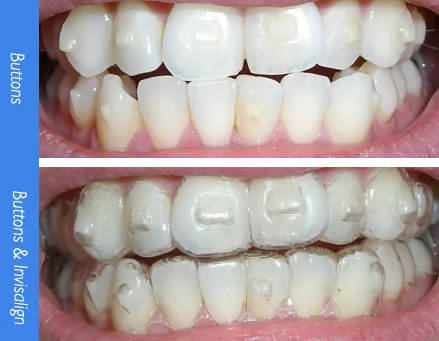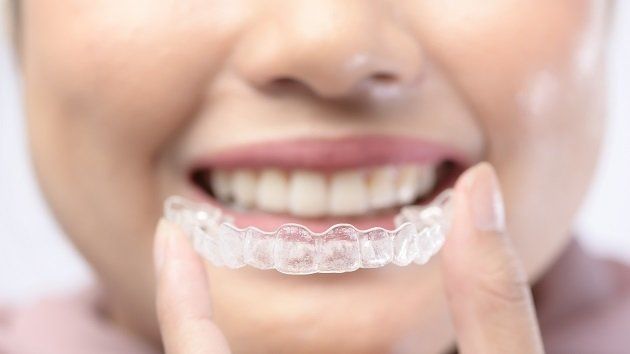Success Stories: How Invisalign Changed Lives and Improved Confidence
Success Stories: How Invisalign Changed Lives and Improved Confidence
Blog Article
Invisalign vs. Conventional Dental braces: Which Choice Is Right for You?
When considering orthodontic therapy, the choice in between Invisalign and conventional dental braces provides several vital elements that warrant cautious evaluation. Invisalign uses a discreet option with removable aligners, while standard braces give a much more visible yet reliable service for extreme misalignment. Each alternative encompasses distinctive benefits and disadvantages related to aesthetic appeals, convenience, treatment period, and cost. Recognizing these nuances is critical for making a notified choice that lines up with your individual choices and way of life. The inquiry stays: which alternative will ideal fulfill your orthodontic needs and assumptions?
Summary of Treatment Choices
In comparison, typical braces include steel brackets and wires that are bound to the teeth. This approach applies constant stress in time to attain alignment. While efficient for complicated orthodontic concerns, conventional dental braces need normal brows through for adjustments and can position difficulties in keeping dental health due to the difficulty of cleaning around cables and brackets.
Both choices have their values, and the selection often hinges on particular dental conditions, lifestyle preferences, and client compliance. Eventually, seeking advice from an orthodontic specialist is vital for establishing one of the most ideal therapy strategy customized to specific demands. Recognizing the subtleties of each alternative can dramatically affect the total success of orthodontic treatment.
Visual Considerations
A considerable variable affecting the selection between Invisalign and traditional braces is the aesthetic charm each therapy offers. Invisalign aligners are crafted from clear plastic, making them practically undetectable when put on. This discreet look is especially interesting teenagers and adults who may really feel awkward concerning their orthodontic therapy. The capability to preserve a natural smile throughout the alignment procedure can dramatically boost the person's self-confidence in social and specialist settings.
On the other hand, conventional dental braces are composed of metal braces and cables, which can be a lot more noticeable. While improvements in orthodontic technology have brought about the development of smaller braces and colored elastics, conventional dental braces still keep a more noticeable account. For some people, the visibility of dental braces might deter them from looking for essential treatment.
Ultimately, the option in between Invisalign and typical braces may hinge on individual choices concerning visual appeals. People that prioritize discretion usually lean toward Invisalign, while those who are less worried concerning presence might opt for standard dental braces. Recognizing the visual effects of each option is important for making a notified choice that straightens with one's lifestyle and choices.
Comfort and Convenience

In regards to ease, Invisalign aligners are detachable, making it possible for individuals to enjoy their favorite foods without restriction and maintain optimum dental health. Cleaning and flossing are streamlined, as the aligners can be secured during these routines, whereas traditional braces call for mindful navigating around brackets and wires.
In comparison, standard dental braces require routine adjustments, making them much less practical for those with hectic schedules. In general, the comfort and convenience of Invisalign make it an enticing option for lots of individuals looking for orthodontic treatment.
Therapy Duration and Effectiveness
While both Invisalign and traditional dental braces are efficient in remedying dental imbalances, the duration of therapy can vary dramatically between the two alternatives. Usually, Invisalign treatment can take anywhere from 12 to 18 months, depending on the complexity of the instance. The clear aligners work by slowly shifting teeth right into their wanted settings, and normal follow-ups with an orthodontist help ensure progress continues to be on the right track.
On the other hand, traditional braces often call for a longer commitment, typically ranging from 18 months to three years. This is because of their more info here fixed nature and making use of cords and braces, which can be more effective for complex situations and serious imbalances (Invisalign). The therapy efficiency of typical dental braces is well-documented, as they permit precise adjustments and greater control over tooth movement
Ultimately, the choice between Invisalign and conventional braces may hinge on both the expected therapy period and the details oral issues handy. Consulting with an orthodontist is critical, as they can offer customized referrals based upon private demands, making certain the picked method straightens with wanted end results and durations.
Price Contrast and Insurance Options
Expense plays a considerable role in the decision-making process for individuals considering orthodontic treatment, whether going with Invisalign or conventional dental braces. On standard, the expense of Invisalign varieties from $3,000 to $8,000, while conventional braces generally cost between $2,000 and $6,000. Elements influencing these expenses include the complexity of the situation, the period of therapy, and geographical area.
Many dental insurance coverage strategies give partial coverage for orthodontic therapies, yet the specifics can differ widely. Normally, typical dental braces might be more frequently covered by insurance coverage my explanation strategies contrasted to Invisalign, which some insurance firms classify as an aesthetic treatment.
In addition, several orthodontic practices provide versatile layaway plan, making both treatment choices a lot more obtainable. People should inquire about potential financing options and discounts for upfront payments. Assessing the total cost, consisting of insurance policy advantages and settlement strategies, is necessary for making a notified decision that aligns with both aesthetic preferences and budget considerations.

Verdict
In recap, the option between Invisalign and typical braces hinges on numerous aspects, including visual preferences, comfort, treatment period, and expense. Invisalign provides a discreet, detachable choice that helps with dental health and dietary adaptability, while conventional braces might be preferable for complicated oral issues and commonly come with a lower cost factor. Ultimately, examination with an orthodontist is important to analyze individual scenarios and determine one of the most appropriate treatment alternative for attaining optimal dental positioning.
When taking into consideration orthodontic treatment, the choice between Invisalign and standard dental braces offers numerous important elements that merit cautious assessment.Contrasting Invisalign and typical dental braces discloses distinctive therapy alternatives for orthodontic correction.While both Invisalign and conventional braces are effective in fixing dental misalignments, the duration of treatment can vary considerably between the two options.Cost plays a significant role in the decision-making procedure for people taking into consideration orthodontic treatment, whether choosing for Invisalign or conventional braces.In summary, the selection in between Invisalign and typical dental braces hinges on multiple factors, including visual choices, comfort, treatment period, and price.
Report this page